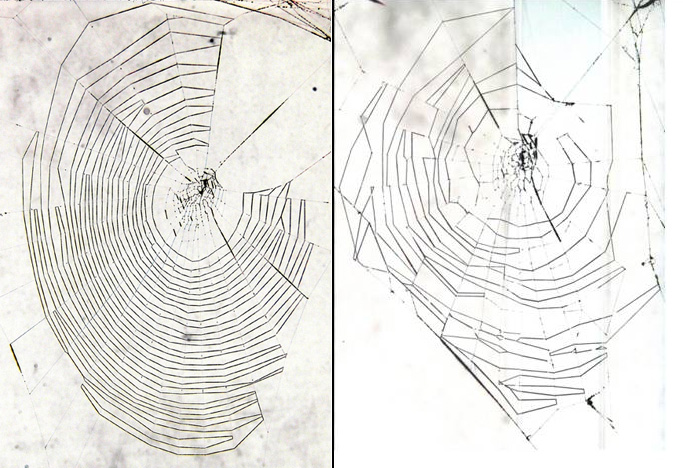Firstly, old age affects us all, even spiders. Researchers have found that, as spiders age, their webs become messier (see figure 1).

Figure 1: Web from a silver-sided sector spider (Zygiella x-notata) aged 17 days (a youngster) on the left, and from a spider aged 188 days (middle-aged) on the right.
(Credit: Mylène Atoneux, Nancy University)
The study was performed to learn more about how aging affects the human nervous system. Studying the effects of age on organisms with simpler nervous systems and shorter life-spans, might help in understanding this, although great care has to be taken in extrapolating the results. At present, a declining nervous system is thought to be responsible for this decrease in web-building ability. This, however, still has to be corroborated by further research.
Secondly, for the first time, researchers have been able to visualize the beating heart of a tarantula. By using a specialized MRI scanner, they were able to reveal the inner workings of this arachnid (see video).
Video: MRI of a beating tarantula heart.
(Credit: Gavin Merrifield, University of Edinburgh)
The dark areas in the videos are muscle and cardiac tissue, while the lighter areas represent the blood. Strangely, in some of the scans, the heart seemed to beat twice instead of once. This could be an image reconstructing error, or a real effect. Since the MRI scanner has been used before on rodents and chickens without issues, the latter explanation is favored at the moment. Further research will hopefully elucidate this...
Thanks for tuning in to Spider News. Have a great day.





Comments